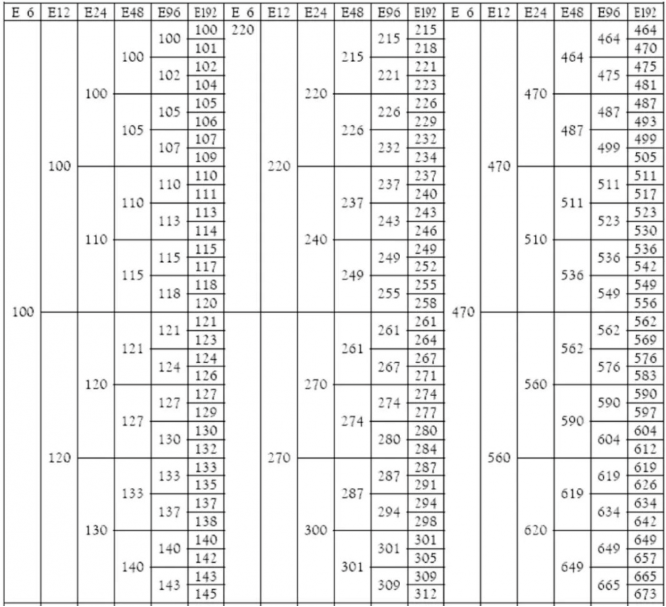Because resistors are designed and produced using exponential distribution, that is, they follow the standard resistance value system defined by the International Electrotechnical Commission (IEC). The standard resistance value system includes a variety of series of resistance values, including E3, E6, E12, E24, E48, E96, and E192 series.
For example: The common ratio of E6 series resistors is 10^(1/6)≈1.5 The common ratio of E12 series resistors is 10^(1/12)≈1.21
The following figure is a detailed standard resistance table:


But the question is, why is the production of standard resistors distributed according to exponential distribution?
The distribution of resistor values is mainly due to production methods and cost considerations. For resistor manufacturers, if the more resistance types are set, the more production lines are required, which requires more workers, and the cost allocated to each resistor increases.
In actual production and manufacturing, resistors cannot be completely accurate, and there will always be some errors. For example, if the marked error of a 100Ω resistor is 1%, then the resistor is allowed to be between 99Ω and 101Ω. Therefore, in the last century, the American Electronics Industry Association defined a standard resistance value system.
To understand this standard resistance value system, let's take a resistor with 10% accuracy as an example. If we have already produced a 100Ω resistor, then we don't need to make a 105Ω resistor, because the precision range of 100Ω resistor is 90~110Ω; similarly, the second resistor we need to produce should be 120Ω, because the precision range of 120Ω resistor is 110~130Ω; and so on, for resistors from 100Ω to 1000Ω, we only need to produce 12 resistor values such as 100Ω, 120Ω, 150Ω, 180Ω, 220Ω, 270Ω, 330Ω, etc., without producing resistors of each resistance value. Therefore, by reducing the number of resistor values on the production line, the production cost of resistors can be reduced.
In reality, many numerical designs use exponential relationships. For example, RMB has 1 yuan, 2 yuan, 5 yuan, and 10 yuan, but there is no 3 yuan or 4 yuan. This is because 1, 2, and 5 can easily combine various values from 1 to 10, which can reduce the number of denominations and facilitate use. The same applies to the thickness of the refills, which are 0.25, 0.35, 0.5, and 0.7.









